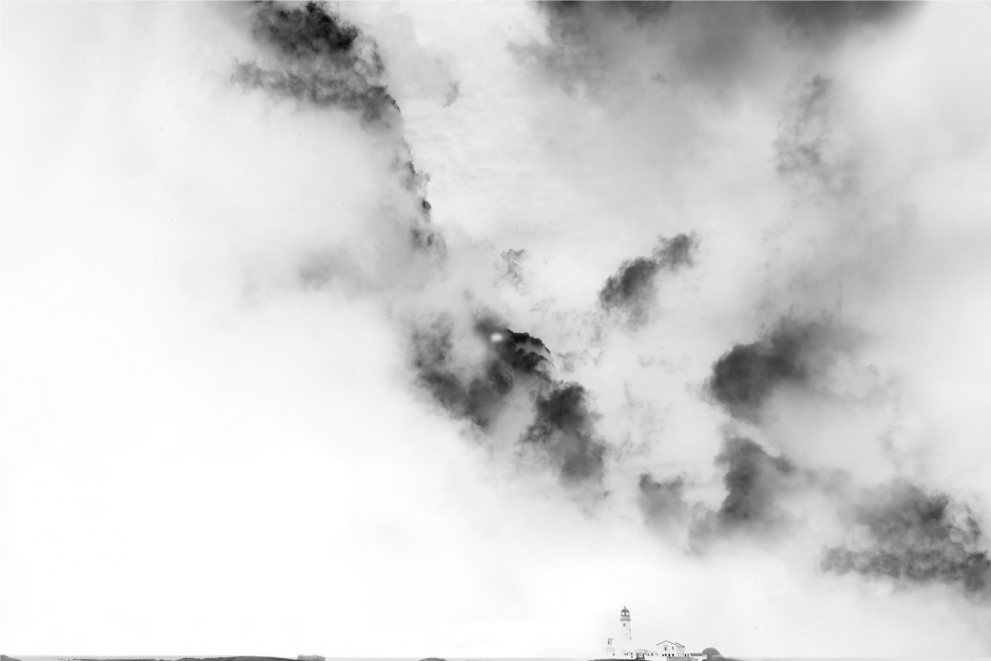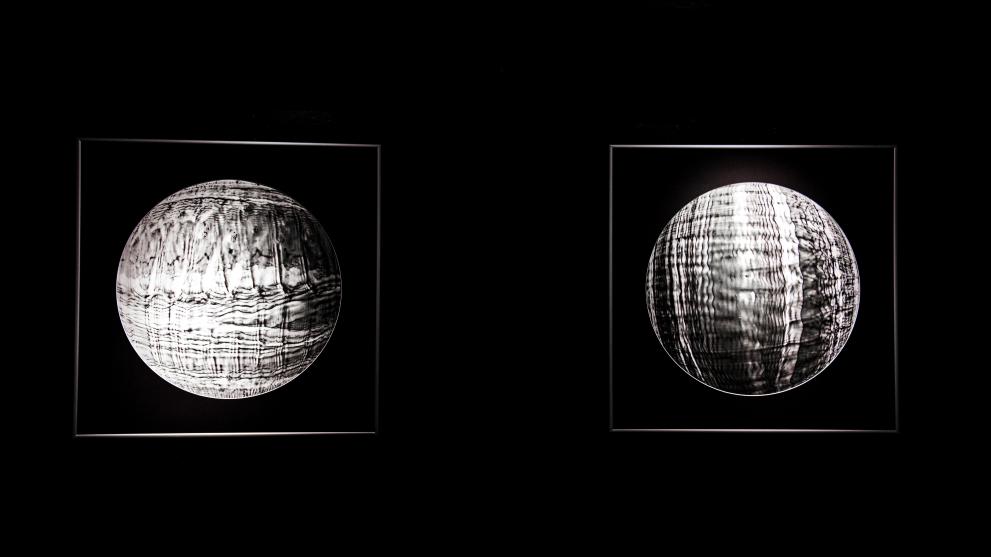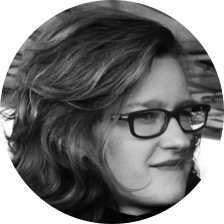Meet the Artist
Anaïs Tondeur is a French visual artist based in Paris. She investigates and creates speculative narratives, through which she experiments on various conditions of "being" in the world and cohabitation with what is outside the human domain: plants, rocks, air, water. She searches for a renewal of our modes of perception, and explores the paths through which to disrupt the grand narrative of the Anthropocene, beyond the separation of nature and culture.
For Resonances II Anaïs developed the project A particular matter/ Noir de charbon in collaboration with JRC physicists Rita Van Dingenen and Jean-Philippe Putaud. It was first exhibited by the JRC, European Commission, at Fair|Fear, both on the JRC site in Ispra and the Museo Leonardo da Vinci in Milan (2017). Also for Resonances II, together with JRC scientist Francesco Mugnai, she developed a photographic installation, La fabbrica dei terremoti. Her sustained partnership with the JRC has resulted in further productive connections and stimulating exhibitions, including a showing in Ispra and Brussels of Anaïs' project Chernobyl Herbarium, which used plants to reflect on nuclear radiation and tragedy at Chernobyl.
Resonances II Project: A particular matter/ Noir de charbon
Artwork by Anaïs Tondeur with Rita Van Dingenen and Jean-Philippe Putaud
From the upper stratosphere to cells inside our bodies, natural and polluted particles travel over the globe. This project, in the form of an installation of interwoven narratives and journeys on the trail of a meteor, invites the visitors to reflect upon our mode of existence, our sense of common good and fairness today. Our story began on one of the most northerly of the Scottish isles, on the remote reef of Fair Isle. We travelled back to the point it was emitted from: the exhaust pipe of a ship in the English Channel, at the southern edge of the North Downs. The precise itinerary of this particle could be retraced by means of atmospheric backward trajectory models and of the analyses of anthropogenic emission of air pollutants that the European Commission makes every day.
Our equipment on the expedition was composed of helmets with a little camera, through which we crystallised each day’s journey in a photograph taking a unique point of view: that of the skyline. Our walking outfit with breathing masks and filters trapped the black carbon particles we encountered. These particles were later extracted by JRC scientist Jean-Philippe Putaud and turned into ink. The photographs visible in the installation are partially composed of that ink made from the particles.

In 2019 she received an Honorary Mention for ARTIFICIAL INTELLIGENCE & LIFE ART by Ars Electronica, and in 2018 she won the PRIX COAL by Laureate for this installation. The PRIX COAL is supported by the French Ministry of Culture and Communication, the French Ministry of Ecology and Sustainable Development, the National Centre of Plastic Arts (CNAP), the Egis group as well as the European Commission.
Subsequent showings of the Carbon black protocol have taken place in Linz for the Cyberarts exhibition by Ars Electronica (2019); at the Nam June Paik Art Center in Seoul, as part of Ecological senses (2019) and at the Hexagone Scène Nationale for Expérimenta, as part of the Arts Sciences Biennale, Grenoble (2020), which received 7.000 visitors. The Carbon black protocol was also shown at The measure of chaos in the State Center of Culture in St Petersburg, (2019); Photo Doc. Lab at Halle Blancs Manteaux, Paris, (2019); the Biennale des écritures du reel in the Galerie Autoportrait, Marseille, (2020); and Etres exposés for CAIRN, IDBL in Digne-les-Bains (2021).
Resonances II Project: La fabbrica dei terremoti
Artwork by Anaïs Tondeur in collaboration with Francesco Mugnai.
This photographic installation magnifies how humans are intrinsically part of the global loops of the earth’s retroaction and its atmospheric, biological, geological or oceanic cycles.
As natural phenomena manifest themselves in an increasingly violent way, the photographs from La Fabbrica dei Terremoti urge us to rethink the incrementing inequalities, which affect the most vulnerable of us. Human tragedies are incrementally entangled into the systemic folds of the planetary disturbance, putting at risk the poorest population and the most deprived territories.
The artist's work has evolved for several years in an engagement for environmental concerns. What are the collateral consequences of natural disaster on human lives? Should we all take care of the earth so as to construct a world of lesser inequalities?
The seismographic images show the unique waveforms of earthquakes. Simulating particular earthquakes in a receptacle filled with water makes the frenetic movement induced by an earthquake visible to the human eye.

In October 2022, Joint Research Centre Director General, Stephen Quest, and Directorate A Director, Sabine Henzler travelled to Japan. As a gift to their hosts, they decided to bring prints of artist Anaïs Tondeur's work La fabbrica dei terremoti, developed in the framework of Resonances II Festival in collaboration with scientist Francesco Mugnai.
These works encapsulate the violence of natural disasters, in turn urging us to think about inequality in society during times of crisis and the consequences of natural disaster on human lives. They were well received and much appreciated by the Japanese correspondents.
The Sky in Us @ Leonardo4Children (continued collaboration with JRC)
On 1st October 2021, Anaïs participated in The Sky in Us · Climate Action Guidelines for Children and Teenagers Across Europe [ trasdiciplinary workshop], organised by the Carano 4 Children non-profit foundation as part of the Leonardo 4 Children non-profit initiative, aiming to empower children and young people across Europe to contribute to address the issues of climate change and gender discrimination, while supporting children in need through art and science education. Here she invited more than two hundred children and teenagers (aged 6-18) to turn to the sky of Europe and portray it through a photographic protocol of a new kind.
Based on Carbon Black / Noir de Carbone, this action is an artistic protocol developed by artist Anaïs Tondeur with atmospheric scientists Rita Van Dingenen and Jean-Philippe Putaud as part of the JRC Resonances II (2016-18) exhibition FAIR/FEAR.
The Sky In Us
By drawing our attention to the sky, this workshop invites more than two hundred children and teenagers age 6-18 to portray the sky of Europe through a photographic protocol of a new kind. Produced and absorbed by humans, the photographed skies will be printed from the particulate matter collected in the air on 1 October 2021.
In order to do this, participants will become standstill explorers. They will track contemporary meteors known as carbon black particles which travel through the sky and the air we breathe. Remnants of human uses of carbon energies, these particles know no borders. They travel over thousands of kilometres. They settle on the ice at the poles, causing them to absorb more of the sun’s energy, further accelerating their melting. But carbon black also infiltrates the lungs of humans and animals, passing through into organs and tissue, causing an increasing number of deaths.
Through this participative photographic performance, you are invited to explore the sky in a sensory manner - through your body, your perceptions and breathing. By experiencing it in a way other than just an element of the landscape or the backdrop of our earthly lives, the sky becomes, from breath to breath, an environment on which our lives depend. The air that everyone breathes is shared with the rest of the world, reminding us of the anthropologist Marc Higgin.
Early morning, on October 1st 2021, in a shared breathing performance, you are invited to turn your attention towards the sky no matter where you are.
The Sky in Us @ the Education for Climate Coalition (ECCO) (continued collaboration with JRC)
Creating a giant portrait of the sky of Europe · JRC SciArt & ECCO initiative
On the 25/11/2021, Anaïs Tondeur participated to and won the “Challenge Agora” session, as part of the first Education for Climate Day, organised by the Education for Climate Coalition (ECCO).
Anaïs pitched The Sky in Us - the protocol she developed together with Rita Van Dingenen and Jean-Philippe Putaud in the framework of Resonances II and turned into a workshop for Carano4Children: a participatory challenge that would educate communities and motivate them to act. She described her engagement with environmental issues as a way to help children tackle current worldwide distress and information overload. Through artistic means her hope is to turn this despair into positive, transformative actions, which can create alternative ways to relate to the world.
Winning the challenge meant that the Education for Climate Coalition would take up this protocol and push it Europe-wide.
And so, on 05/02/2022, the climate action workshop The Sky in Me was launched across Europe by the Education for Climate Coalition. Participants across Europe were invited to take pictures of the sky, and they had until the 15/02/2022 to send them to the Parliament of Clouds, in Paris.
In this way, they will create one giant portrait of the sky of Europe, uniting us through the air we share and reminding us of the dangerous status of pollution.
Stay tuned for challenge updates!

